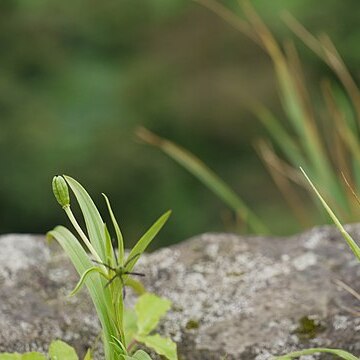Plant 40-50 cm tall. Leaves 3-6, usually well spaced, occasionally crowded and without visible internodes, linear or gradually tapering, flat or channelled, 1.5-4.5 mm wide, glabrous. Stem simple, or once or twice branched. Inflorescences 1-4-flowered; bracts 1 to several per flower, often aggregated near base of inflorescence; pedicels usually 20-60 mm long at anthesis, occasionally 3-8 mm, erect. Tepals narrowly linear, channelled, acute, 6-11 mm long, dark red or reddish brown. Stamens 1/3-1/2 as long as tepals; filaments glabrous; anthers purple, 1-1.5 mm long.
A herb that develops a corm. This is 1-2 cm across. It keeps growing from year to year. It grows 40-70 cm high. The leaves are narrow and 7-15 cm long by 3-9 mm wide. The base has a sheath and clasps the stem. There are 2-10 flowers in a group. The flowers are dark red and brown.

